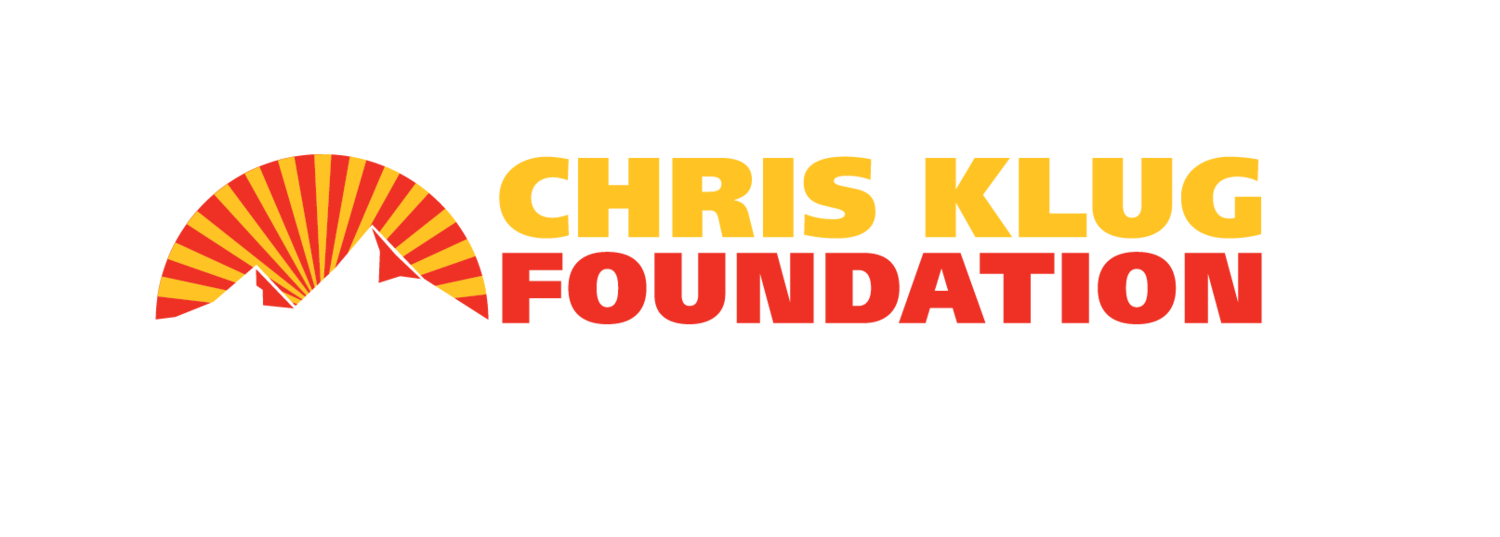Hope Blooms
Valen Keefer is a blog writer for the Chris Klug Foundation. She sat down with Bryan to learn more about his book, Hope Blooms, and the creation of the Donate Life Float.It was our first New Year’s Day following our move from our home state of Pennsylvania to Northern California in 2010 and there I was, 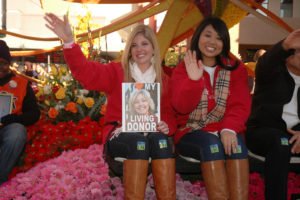 seated on the Donate Life Float in the Rose Parade, waving to people across the world on national TV. It still feels surreal. That unforgettable ride of a lifetime and hours of waving were full of memories I’ll always treasure. It exemplifies that something extraordinary can come from the most challenging days of our lives. I participated in an essay contest that Astellas Pharma held, where I shared how transplantation has changed my life and my winning essay is what secured me a spot on the 2011 “Seize the Day” Donate Life Float.I believe the magic surrounding the Donate Life Float is something that has to be felt. It was an honor to help decorate the float
seated on the Donate Life Float in the Rose Parade, waving to people across the world on national TV. It still feels surreal. That unforgettable ride of a lifetime and hours of waving were full of memories I’ll always treasure. It exemplifies that something extraordinary can come from the most challenging days of our lives. I participated in an essay contest that Astellas Pharma held, where I shared how transplantation has changed my life and my winning essay is what secured me a spot on the 2011 “Seize the Day” Donate Life Float.I believe the magic surrounding the Donate Life Float is something that has to be felt. It was an honor to help decorate the float  and be a part of such a special event helping to raise awareness of organ donation. One of the best parts was the lifelong friendships made. I’ll never forget the joy and enthusiasm I felt the morning we arrived to help decorate the float. Everyone stood in a circle and the kick-off meeting was led by author and speaker Bryan Stewart. You could feel his passion and excitement and he helped make our time in Pasadena special. I’m grateful to say that this man has become a dear friend.Over seven years after meeting Bryan and riding on the float, he has put into words the magical voyage of the Donate Life Float in his recently published book titled, Hope Blooms. I believe being a part of the float is something that everyone should experience, and now they can by reading Hope Blooms. I connected with Bryan and am excited to share the following Q&A.Thank you, Bryan, for the heart and soul you put into helping to make the Donate Life Float what it is today. Thank you for your passion and dedication to capture and bring the beautiful journey of the float to life in Hope Blooms, to help inspire and educate the world on organ donation and make sure its miraculous tale lives on forever.I encourage you to learn more about the Donate Life Rose Parade Float at: www.donatelifefloat.org and learn more about Bryan Stewart and purchase Hope Blooms at: www.bryan-stewart.com. 10% of all sales on Bryan’s website will be contributed to Donate Life America to support the National Donor Registry and Living Donation Education programs.Valen: What is your connection to organ donation?Bryan: I served as vice president of communications at OneLegacy, the non-profit organ procurement organization (OPO) serving the greater Los Angeles area, from 2001 to 2014.
and be a part of such a special event helping to raise awareness of organ donation. One of the best parts was the lifelong friendships made. I’ll never forget the joy and enthusiasm I felt the morning we arrived to help decorate the float. Everyone stood in a circle and the kick-off meeting was led by author and speaker Bryan Stewart. You could feel his passion and excitement and he helped make our time in Pasadena special. I’m grateful to say that this man has become a dear friend.Over seven years after meeting Bryan and riding on the float, he has put into words the magical voyage of the Donate Life Float in his recently published book titled, Hope Blooms. I believe being a part of the float is something that everyone should experience, and now they can by reading Hope Blooms. I connected with Bryan and am excited to share the following Q&A.Thank you, Bryan, for the heart and soul you put into helping to make the Donate Life Float what it is today. Thank you for your passion and dedication to capture and bring the beautiful journey of the float to life in Hope Blooms, to help inspire and educate the world on organ donation and make sure its miraculous tale lives on forever.I encourage you to learn more about the Donate Life Rose Parade Float at: www.donatelifefloat.org and learn more about Bryan Stewart and purchase Hope Blooms at: www.bryan-stewart.com. 10% of all sales on Bryan’s website will be contributed to Donate Life America to support the National Donor Registry and Living Donation Education programs.Valen: What is your connection to organ donation?Bryan: I served as vice president of communications at OneLegacy, the non-profit organ procurement organization (OPO) serving the greater Los Angeles area, from 2001 to 2014. 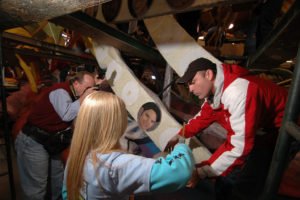 In November 2000, I was assigned to lead a branding project commissioned by Tom Mone, CEO of what was at the time called SCOPC (Southern California Organ Procurement Center.) I knew nothing about organ donation other than the pink-dot sticker on my driver’s license, but I soon found myself deeply touched as I read online donor family tributes to their loved ones. Less than a year later, I was invited to join the OneLegacy, and my first day on the job, Karen Libs handed me a letter from lung recipient Gary Foxen suggesting OneLegacy enter an organ donation-themed float in the Rose Parade.Valen: How would you describe your book Hope Blooms?Bryan: Hope Blooms is a 12-year account of the genesis, evolution, and institution of Donate Life’s float participation in the Rose Parade. The book introduces readers to the people, events, and moments of joy, heartbreak, and grace that helped position organ, eye, and tissue donation as life-affirming and contribute to dramatic increases in the public’s willingness to donate.The book has three broad undercurrents. First, it is a detailed history of the Rose Parade campaign’s influence on the public’s perception of organ and tissue donation:
In November 2000, I was assigned to lead a branding project commissioned by Tom Mone, CEO of what was at the time called SCOPC (Southern California Organ Procurement Center.) I knew nothing about organ donation other than the pink-dot sticker on my driver’s license, but I soon found myself deeply touched as I read online donor family tributes to their loved ones. Less than a year later, I was invited to join the OneLegacy, and my first day on the job, Karen Libs handed me a letter from lung recipient Gary Foxen suggesting OneLegacy enter an organ donation-themed float in the Rose Parade.Valen: How would you describe your book Hope Blooms?Bryan: Hope Blooms is a 12-year account of the genesis, evolution, and institution of Donate Life’s float participation in the Rose Parade. The book introduces readers to the people, events, and moments of joy, heartbreak, and grace that helped position organ, eye, and tissue donation as life-affirming and contribute to dramatic increases in the public’s willingness to donate.The book has three broad undercurrents. First, it is a detailed history of the Rose Parade campaign’s influence on the public’s perception of organ and tissue donation: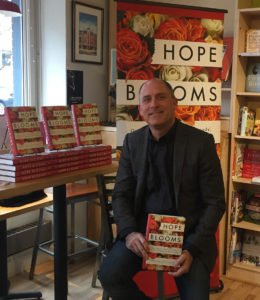 how it brought the cause into America’s living rooms; united national advocacy efforts under the Donate Life brand; elevated the visibility of tissue donation and transplantation; gave a voice to donor families; and repositioned organ donation from being about death to an affirmation of life. Second, the book is an affectionate homage to the thousands of people and organizations who participated in and contributed to the “America’s Donate Life Celebration,” and continue to do so. And third, it is a how-to filled with strategies, tactics and techniques that non-profit professionals can apply to their own community—and campaign-building efforts.Valen: What was the inspiration behind writing Hope Blooms?Bryan: I’ve long thought the inspiration, collaboration and innovation that marked the Donate Life Rose Parade Float’s formative years would be instructive to leaders of non-profit organizations and social causes. I also saw how the story could invite non-donors to see the cause in a new, positive light and motivate them to reconsider their donation decision. Of course, the journey was incredibly emotional for me personally, so after I passed the torch to my successors, it took two years of reflection before I felt I was ready to balance all these considerations into a cohesive narrative. I also knew that once I started, it would take at least a year to craft a story that would be honest, affectionate, accurate, and worthy of the people who participated in and contributed to the journey.Valen: What have you learned from the organ donation community?Bryan: My experience in organ donation furthered my belief in the goodness of people. In our day-to-day, it’s easy to be drawn into disagreements. In matters of life and death, those conflicts become much less important, taking a back seat to people helping each other from a place of kindness. Also, after meeting thousands of people who have demonstrated so much courage in the face of great adversity, I’ve learned to roll with the punches. Liver recipient and 2006 float rider Kathy Hasan said it best: “I don’t sweat the small stuff.”Valen: What is your favorite memory from being a mastermind of the Donate Life Float? Bryan: Between the many life-changing moments I experienced over the campaign’s first 12 years, it’s hard to pick one that stands out. One that continues to resonate with me took place a couple of days before the 2014 Rose Parade. As I was exiting the decorating facility en route to the floragraph family breakfast, a late donor’s wife and her teenage daughter were waiting outside the gate. Both looked forlorn and had with them a tagged flower vial, which looked empty without the bloom it was designed to hold. Due to factors beyond their control, the two had arrived a day after families had come to place their dedicated roses on the float.
how it brought the cause into America’s living rooms; united national advocacy efforts under the Donate Life brand; elevated the visibility of tissue donation and transplantation; gave a voice to donor families; and repositioned organ donation from being about death to an affirmation of life. Second, the book is an affectionate homage to the thousands of people and organizations who participated in and contributed to the “America’s Donate Life Celebration,” and continue to do so. And third, it is a how-to filled with strategies, tactics and techniques that non-profit professionals can apply to their own community—and campaign-building efforts.Valen: What was the inspiration behind writing Hope Blooms?Bryan: I’ve long thought the inspiration, collaboration and innovation that marked the Donate Life Rose Parade Float’s formative years would be instructive to leaders of non-profit organizations and social causes. I also saw how the story could invite non-donors to see the cause in a new, positive light and motivate them to reconsider their donation decision. Of course, the journey was incredibly emotional for me personally, so after I passed the torch to my successors, it took two years of reflection before I felt I was ready to balance all these considerations into a cohesive narrative. I also knew that once I started, it would take at least a year to craft a story that would be honest, affectionate, accurate, and worthy of the people who participated in and contributed to the journey.Valen: What have you learned from the organ donation community?Bryan: My experience in organ donation furthered my belief in the goodness of people. In our day-to-day, it’s easy to be drawn into disagreements. In matters of life and death, those conflicts become much less important, taking a back seat to people helping each other from a place of kindness. Also, after meeting thousands of people who have demonstrated so much courage in the face of great adversity, I’ve learned to roll with the punches. Liver recipient and 2006 float rider Kathy Hasan said it best: “I don’t sweat the small stuff.”Valen: What is your favorite memory from being a mastermind of the Donate Life Float? Bryan: Between the many life-changing moments I experienced over the campaign’s first 12 years, it’s hard to pick one that stands out. One that continues to resonate with me took place a couple of days before the 2014 Rose Parade. As I was exiting the decorating facility en route to the floragraph family breakfast, a late donor’s wife and her teenage daughter were waiting outside the gate. Both looked forlorn and had with them a tagged flower vial, which looked empty without the bloom it was designed to hold. Due to factors beyond their control, the two had arrived a day after families had come to place their dedicated roses on the float. 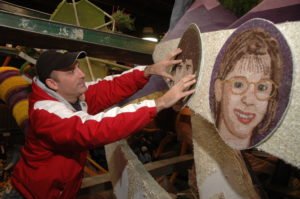 Looking into their eyes, I saw that placing a rose on the float in memory of their husband and father meant everything to them. Being late for my next engagement was completely unimportant in the face of helping this donor family honor their loved one. As I walked them into the barn and introduced them to my colleagues Karen and Esther-Marie, the feeling of being of such service was profound. Heading on to the event, a wave swept over me as I contemplated how the Donate Life float had become so meaningful to our community, as well as the enormity of the 12-year sustained effort it had taken to get there.Valen: What message do you have for someone who is on the fence about saying “yes” to being an organ donor?Bryan: First of all, the decision to be a donor is deeply personal, with feelings sometimes outweighing facts when it comes to weighing the options. To those who believe the most common misconception: “they won’t work as hard to save me” if they are registered—they are often assured when I tell them that organ donation is possible only after you receive the most aggressive life-saving care, as organs can’t be transplanted without a steady supply of blood and oxygen. People are also surprised to learn the opportunity to donate organs is extremely rare. Once they know less than one percent of deaths are under circumstances where organ donation is possible, they understand that life-saving efforts will rarely involve anything having to do with organ donation.Valen: What is your hope for sharing this incredible story?Bryan: To the families and colleagues who shared the journey, the book will remind them that their stories are remembered. They were part of something truly remarkable—even one-of-a-kind. To healthcare professionals, I hope the book not only reaffirms their support of organ donation but also gives them an emotionally engaging framework to inspire the public and partners to embrace the cause. On a much broader level, I hope the Donate Life Rose Parade Float’s genesis, evolution, and ongoing story can inspire Americans to see that it is possible for people from a broad cross-section of ethnicities, beliefs, identities and geographies to come together through shared purpose. Honoring each other can unify us.
Looking into their eyes, I saw that placing a rose on the float in memory of their husband and father meant everything to them. Being late for my next engagement was completely unimportant in the face of helping this donor family honor their loved one. As I walked them into the barn and introduced them to my colleagues Karen and Esther-Marie, the feeling of being of such service was profound. Heading on to the event, a wave swept over me as I contemplated how the Donate Life float had become so meaningful to our community, as well as the enormity of the 12-year sustained effort it had taken to get there.Valen: What message do you have for someone who is on the fence about saying “yes” to being an organ donor?Bryan: First of all, the decision to be a donor is deeply personal, with feelings sometimes outweighing facts when it comes to weighing the options. To those who believe the most common misconception: “they won’t work as hard to save me” if they are registered—they are often assured when I tell them that organ donation is possible only after you receive the most aggressive life-saving care, as organs can’t be transplanted without a steady supply of blood and oxygen. People are also surprised to learn the opportunity to donate organs is extremely rare. Once they know less than one percent of deaths are under circumstances where organ donation is possible, they understand that life-saving efforts will rarely involve anything having to do with organ donation.Valen: What is your hope for sharing this incredible story?Bryan: To the families and colleagues who shared the journey, the book will remind them that their stories are remembered. They were part of something truly remarkable—even one-of-a-kind. To healthcare professionals, I hope the book not only reaffirms their support of organ donation but also gives them an emotionally engaging framework to inspire the public and partners to embrace the cause. On a much broader level, I hope the Donate Life Rose Parade Float’s genesis, evolution, and ongoing story can inspire Americans to see that it is possible for people from a broad cross-section of ethnicities, beliefs, identities and geographies to come together through shared purpose. Honoring each other can unify us.
